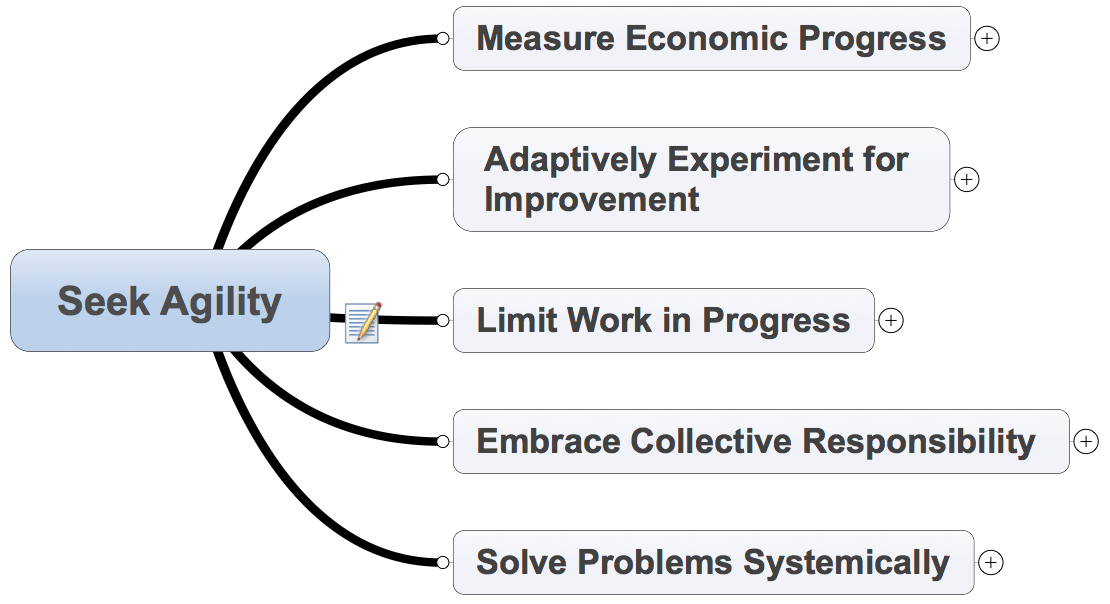-

What is an Agile Methodology? How does it beat Waterfall?
Using an agile methodology for project management can help CEOs, organizations, managers, teams and individuals rapidly adapt to change, beat slower competitors and win profitable markets. Agile methodologies were created to prevent the frequent and expensive manufacturing and development failures that arose in “waterfall” or “ad hoc” projects. Most people tackle large projects using an intuitively obvious approach called “the waterfall method”: plan…
-

Agile Leadership Patterns:
The Agile Way of DoingDan Greening and Jeff Sutherland will discuss Agile Leadership Patterns: The Agile Way of Doing at the Agile 2015 Conference, August 3–6, 2015. Join us and learn to answer the questions, “Am I agile?”, “Is my organization agile?” and “Are my leaders agile?” You only need to know five patterns.
-

Agile Job Search Techniques: 7 Steps to Responsibility
If you want to get an awesome job with the least effort, jazz up your job search with agile self-management (Tweet). Agile methods will help you rapidly discover which of your skills match employer’s true needs, market yourself for better results, target “channels” that have the best opportunities, hone in how much to ask for,…
-

Agile Supports Software Success
Agile posits this trade off: that creative projects, such as software development, have such huge market, technical and budget uncertainty, that we should pay the high expense of repeated regression testing, packaging, deployment, and rework, to enable us to test our market and technical theories early and often, adapting our approach as we learn more.…
-
![TOTALLY MISSED [Converted].eps < Senex Rex](https://senexrex.com/wp-content/uploads/2014/04/TOTALLY-MISSED-Converted.eps_1.png)
Forecasting without Historical Data
We can forecast even when no historical data exists, if we use our experience and judgment. In Part 1 of our probabilistic forecasting series we looked at how uncertainty is presented; in Part 2 we looked at how uncertainty is calculated. Both of those parts presumed historical data was available. Although estimating without historical data…
-

Probabilistic Forecasting
In Part 1 of this series we discussed how probabilistic forecasting retains each estimate’s uncertainty throughout the forecast. We looked at how weather forecaster’s present uncertainty in their predictions and how people seem comfortable that the future cannot be predicted perfectly and life still continues. We need this realization in IT forecasts! In Part 2…
-

Forecasting Defined
This is the first article in a series that will introduce alternative ways to forecast date, cost and staff needs for software projects. It is not a religious journey; we plan to discuss estimation and forecasting like adults and understand how and when different techniques are appropriate given context. Stakeholders often ask engineers to estimate…
-

Breaking into Quality: Prioritization as a Pitfall
Our team kept solving the easy stuff, the big deliverables seemed to take forever, and would inevitably come out with major bugs. Do the right things right… Why not just do that? For any one product, a number of people and processes come together. We automatically operated by priority, and this turned out to be the…
-

Uniform Point Estimates: Violation?
I recently observed that most of a client’s backlog items had 5-point estimates. A colleague tweeted it, and an 180+ Twitter storm followed. This article explains the phenomenon, and why no one should call the police. Introduction To manage capacity, forecast delivery dates and motivate architectural thinking, we often ask development teams to estimate proposed…
